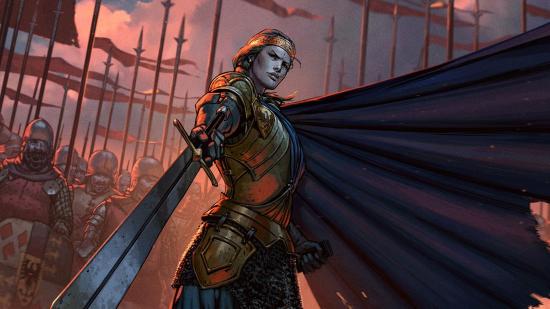Thronebreaker: The Witcher Tales, is the next game from Witcher developer CD Projekt Red. It’s a single-player adaptation of the standalone CCG Gwent, itself taken from The Witcher 3’s in-game card game. But while Thronebreaker takes place in the same world as Geralt’s adventures, it’s a very different offering. For one thing, Geralt is out as the main character, replaced by warrior-queen Meve, ruler of the twin kingdoms of Lyria and Rivia.
Also gone are The Witcher franchise’s open world and combat mechanics, replaced by an isometric overworld and games of Gwent intended to replicate battles between opposing forces. Story-telling is much the same as fans of the series will have seen before, but the rest of Meve’s adventures are a significant departure.
Ahead of the its release next month, we spoke to Thronebreaker’s game director, Mateusz Tomaszkiewicz, about the new format, the inspiration behind the lead character, and the potential future of The Witcher Tales. If you want to know more, you can also check out our Thronebreaker preview, based on the first few hours of the main campaign.
PCGN: Why did you choose Meve as the main character?
Mateusz Tomaszkiewicz: When I was asked to work on the single player campaigns for Gwent, I was thinking who could actually be the character that would be the protagonist for our campaigns. I had a few different ideas but in terms of the Northern Realms characters it would have to be a leader, a charismatic leader. It had to be someone who operated in a setting that justifies using all the decks that you have in Gwent, and the second war with Nilfgaard is a perfect theatre for such story. It had to be a character that was interesting and that would be appealing to the fans.
Meve is a character remembered from the books and I obviously re-read the parts where she was present or mentioned. fortunately the way that Andrzej Sapkowski wrote these chapters was very general. He mentioned her being in different places but he didn’t say much about what she was doing there so it was a perfect opportunity to fill in the gaps and actually build the story around this character. Also the way she was described was very interesting because she was one of the few female monarchs in the North – she was a strong warrior, an influential woman that actually all the other monarchs respected which in the Witcher world is not very common. Usually it’s sorceresses that have such positions of power. So I just felt that was interesting and felt we could build on that. I think we kind of managed to achieve that, I hope people will like her as a character.
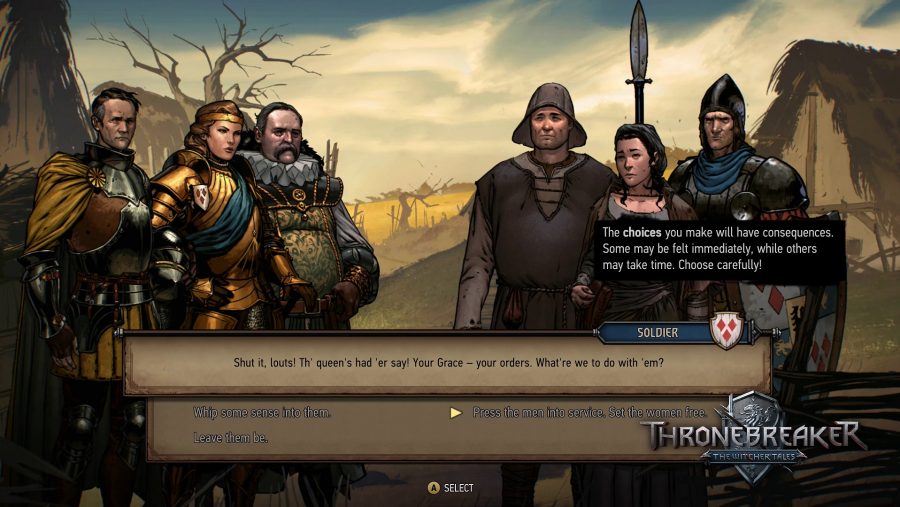
Is that why you didn’t choose more well-known characters like Henselt and Demavend?
MT: Yes, especially because these monarchs had – like I did consider [Witcher 1 and 2 character] Foltest for a while. First of all those characters were used already a lot in the previous games, secondly they had a lot of negative traits as well. One purpose was to show that the monarchs in the North are corrupt and so on and each of them has issues so to speak and Meve was this monarch that wasn’t much explored. When I was reading through the forums I saw people who read the books saying ‘I’m curious what happened with Meve’ so I thought ‘why not? I mean that might be a cool character to work on.’
Are you confident that this is going to be a recognisable Witcher experience for the people who haven’t dived that deep into the wider lore?
MT: I believe so, first of all because of the recurring characters that we had, secondly because the way we write dialogue and the way we write the story hasn’t changed. It’s still the same way we were writing our stories from the previous games. I think the spirit of The Witcher universe is still within that game. From the people that we allowed to play the game so far we got that vibe that they also feel that this is another Witcher game and so on.
Obviously we also have more mechanics, but it’s still very story-related for choices and consequences. The theme of choices where no option is actually a good option but you have to make that choice is still there. With Meve it’s actually it’s even better and actually allows us to tell this in a different way. She as a monarch is forced to make such decisions on a daily basis while Geralt only got himself in a pickle from time to time.
CD Projekt Red PR representative: And obviously this is something that’s going to appeal to The Witcher audience but Thronebreaker is also a great starting point for potential new Witcher fans, how did you design the story?
MT: Well the story is written in a similar way to our previous games, so in a way that should allow you to get smoothly into this universe, and we explained the concepts again so if you didn’t play the previous games you have nothing to worry about. It’s not a direct continuation of The Witcher 3-
It’s actually set before.
MT: Yeah exactly so you don’t have to worry about that either, it fills in the gaps, it tells you more about this universe. So, if you’re a player that loved The Witcher games you will learn new things about it, see new areas and so on. If you’re a new player then you’re not missing out on anything.
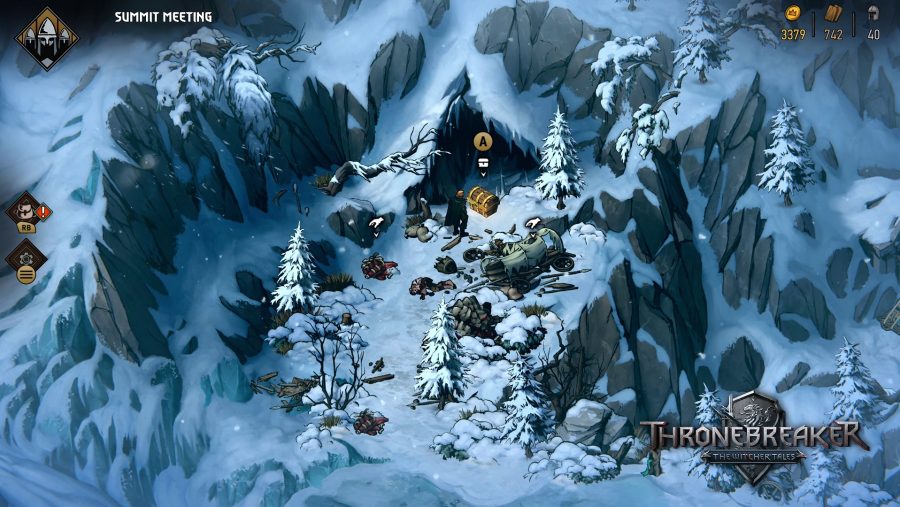
PCGN: What inspired the move to those the previously unseen Northern Realms?
MT: One of the things, the limitations on building the story was that Meve actually visited those places in the books, so it was kind of a natural choice to pick those, but some of them we added on our own. But we believe that these are cool places for the players to see. As you know, Geralt had this title of Rivia right? And I personally as a player was always curious what Rivia looks like, since he had that title and the place was referenced multiple times within the books and the games. I always wanted to make Mahakam in one of our games because it’s just such a cool concept. It’s the land of dwarfs and dwarves are awesome in The Witcher so I always wanted to see it. Angren is I think is the most Witcher-y place we have from Thronebreaker because it’s this dark swamp, Velen-like with monsters and you know these Witcher themes. And Lyria is a good starting point for the story because this is one of the Twin Kingdom that Meve rules and is the best way to show what kind of character she is and what is her relationship with the other characters and with the world in general.
How did you arrive at the start of the overworld and this isometric top down view?
MT: So at the beginning actually we started off with a much simpler idea than what you saw today. It was supposed to be around 10 hours of gameplay, it was supposed to be a much simpler adventure. At first I was thinking about a node based system. You might have played Puzzle Quest. The way that the exploration works there you have isometric as well and you just press nodes and the character moves between them and you have story nodes and you just unlock them.
However, once we started working on it we felt we could do more, and we actually made a full fledged exploration. Once we did this the discussions about the scale of the game started, about the proportion of the character to the assets, whether they should be realistic or not. If they were realistic then the maps won’t be too big because of stuff we have to do, if they are more symbolic then we can do bigger maps, but this didn’t sit well with everyone so we went for something in between.
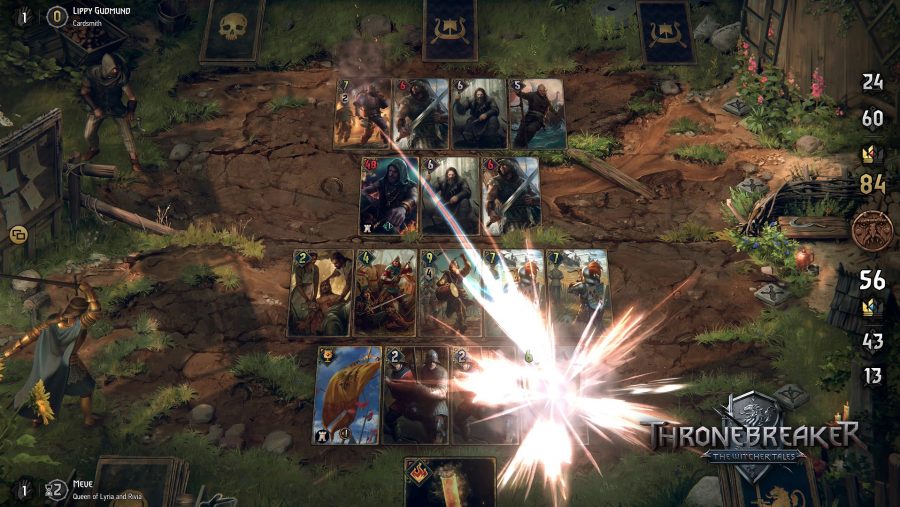
We went for isometric for multiple reasons, well first of all we were heavily inspired by games like Heroes of Might and Magic. Secondly, we wanted to show the game in a kind of different scale because again this time around you are not a single Witcher that is travelling the road that is in this world and just does quests. This time around you are leading an actual army so it had to be a bit more symbolic because we didn’t find a good way of showing an army travelling in a realistic scale. You’d probably have to do a full fledged RTS to do this.
Gwent has gone from 10/15 hours to 30 hours, so beyond the presentation what else has changed and why did those changes come about?
MT: So, we have added many more features so for example now when you travel around the world you not only have the main storyline, dialogue and so on – you also have a lot of side activities. So you have side quests; you have puzzles which you can solve to gain additional resources and find items; you can find buried treasures which give you currency for in the game, but hey also give you unlocks for the multiplayer version of the game; you have locked objects where you have to find the key to open them. You have standard battles, you have letters and POIs you can find, shorter interactions where you can exchange goods or you have to get rid of an obstacle that is in your way.
We have also improved heavily upon the feature of the camp because this is something that we wanted from the beginning. We have added a lot of buildings to it in order for it to last through this whole campaign and give you this customisation, and options to build new units and different buildings that give you different things.
PR rep: And all that he’s mentioning now is all completely story-driven. Its a true RPG experience, what we expect of a Witcher game but a different perspective.
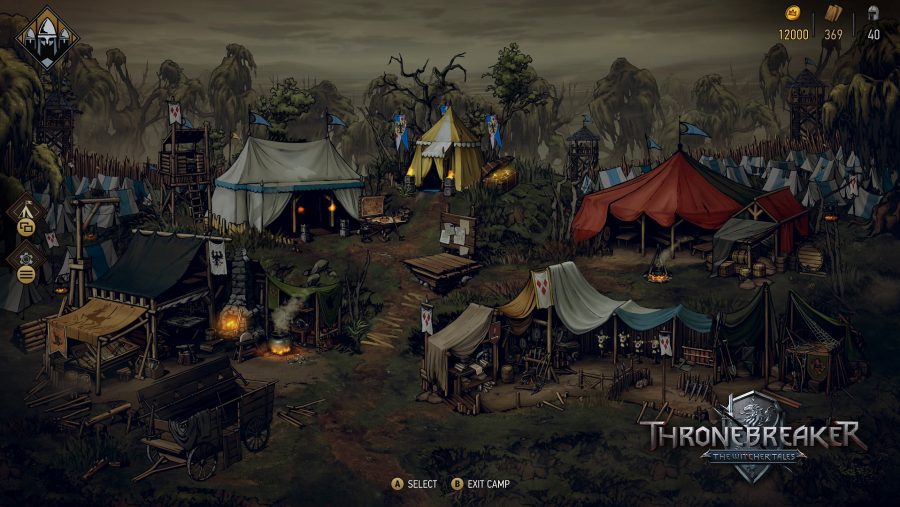
You mentioned puzzles, which are very different to traditional battles – where did they come from? What do you see as their parallel within the Witcher games to those puzzles?
MT: Well I would say these puzzles are used by us to show more abstract situations where we couldn’t actually do that with a standard Gwent battle. For example when you get a rock slide we couldn’t actually show this with a standard Gwent battle, because, well, who’s the leader for the rock slide? It doesn’t really work.
So more abstract concepts like these work for puzzles very well actually because you can show a rock slide by cards, by giving them specific abilities and giving you a special objective to survive the rockslide. I would say the best parallel is the cast of sequences we had in Witcher games which are not just regular fights but more like cutscenes and more like events that happen throughout the game. We can tell those kinds of stories through them.
Of course sometimes these puzzles also relate directly to battles like when you have a specific boss monster for example. Let’s say you’re fighting a manticore – the way we do that is basically like building her from different cards. You know, it’s like a big boss you have to beat and these different cards do different things; one of them is a paw and one is a wing and so on. If you did that in a standard battle we would have to do more of a stretch. The manticore would have to be a leader and have its own group of monsters with it, but that doesn’t really work because manticores are solitary creatures. So in this way, by making it a puzzle we actually make it work better in terms of immersion and how it makes sense in the world.
The name has changed – Is the Witcher Tales thing an ongoing aim for more Witcher projects?
Of course if people enjoy this project, if people enjoy Thronebreaker we will think of making more. This will be an idea but we will see how it is received, and we’d be thrilled to make more games in the Witcher universe. Of course if we do, those would feature different protagonists and different factions because this one is Northern Realms.
